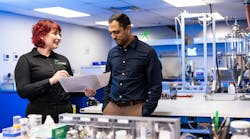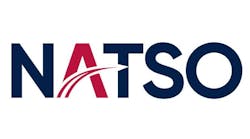More than 40 years ago, the first emissions standards were enacted for heavy-duty diesel engines. The industry has come a long way since, answering the calls of regulators to reduce emissions by over 98%. With a new, lower federal standard for ozone on the horizon, continued focus on vehicle emissions’ impacts on community health, and a range of regulations on carbon emissions, the stage is set to seek even lower emissions from goods movement. How low? In some regions, possibly zero.
Let’s look at a few zero and near-zero emissions projects in California:
- The Port of Long Beach is set to become the most advanced container terminal in the U.S. with the opening of the newly redeveloped Long Beach Container Terminal (LBCT). This modern terminal will move up to 3 million containers per year using a number of electrically-powered, automated technologies. A showpiece of the system, Automatic Guided Vehicles (AGVs) developed by Terex, will move containers from the ship cranes to rail-mounted gantry cranes autonomously. When low on power, the AGVs head to an automated battery swapping and charging station. The new LBCT terminal is set to open in early 2016.
- In Carson, CA, construction is underway on the first catenary-powered freight truck demonstration in the U.S. Led by the South Coast Air Quality Management District (SCAQMD), this $16 million project will test the ability of an overhead catenary system to provide power to electric-drive trucks moving goods between the Ports of Los Angeles and Long Beach and near-dock rail yards. Now, Siemens’ newly-developed pantograph system makes the application of catenary systems to heavy-duty trucks potentially feasible for the first time. Off the catenary system, trucks will operate using onboard batteries or switch to their engines for power. The 1-mi.-long section of electrified roadway should be ready for testing by the end of this year. If successful, a second phase of demonstrations could extend the system further into the ports.
- SCAQMD is also working with BAE, Transpower, and US Hybrid to develop five fuel cell hybrid port trucks with typical daily ranges of 100-200 mi. The proposed vehicles, expected to be operational in 2016, will cover a range of battery sizes, fuel cell power levels, and plug-in charging capabilities.
- Cummins Westport is developing a near-zero emissions (NZE) version of its 8.9L ISL G natural gas engine. Expected to be certified to California’s Optional Low NOx standard, the new engine will provide up to 90% lower NOx emissions than today’s engines. Low particulate matter emissions will also be achieved without a particulate filter. Paired with the growing availability of renewable natural gas, the NZE ISL G is set to provide pollutant and carbon reductions that are on par or better than those offered by electric and fuel cell vehicles today.
Growing populations, increased demand for goods, and an ever-increasing focus on public health are creating incredible opportunities for these technologies in the future of goods movement. It will take a great deal of time, effort, and capital to transform our goods movement system into one that both enables economic growth and protects environmental quality, but the technologies under development show promising paths to that future.
To learn more about these projects and other advanced technologies in transportation and alternative fuels, save the date for the 2016 ACT Expo set for May 2-5 at the Long Beach Convention Center.
Patrick Couch is a project director at Gladstein, Neandross & Associates (GNA), the clean transportation and energy consulting firm that organizes the Alternative Clean Transportation (ACT) Expo. Learn more at www.gladstein.org and www.actexpo.com.


